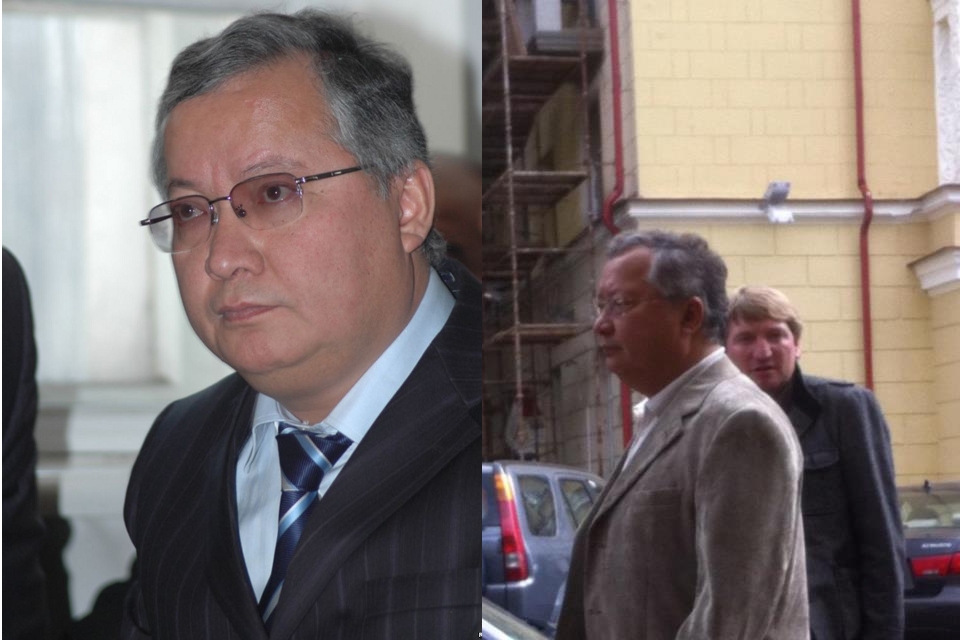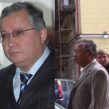
Belarusian-Kyrgyzstani Clash over the Bakiyevs
Publication: Eurasia Daily Monitor Volume: 9 Issue: 163
By:

The recent discovery that former Kyrgyzstani President Kurmanbek Bakiyev’s brother Janysh is also living in Minsk sparked furious exchanges between Kyrgyzstan and Belarus, with the latter country refusing a request to extradite him to face charges of murder. Belarus maintains, officially at least, that the request cannot be granted because it is politically motivated. The exchange raises questions about relations between countries that are joined in two major alliance systems: the Collective Security Treaty Organization (CSTO) and the Commonwealth of Independent States (CIS). Kyrgyzstan has also expressed interest in joining the Customs Union that currently comprises of Russia, Belarus and Kazakhstan (https://en.rian.ru/world/20101228/161963440.html). In theory, the dispute should be easy to resolve. In fact, such an outcome is unlikely.
The story began in April 2010, when the deposed Kyrgyz leader Kurmanbek Bakiyev turned up in Minsk, following his overthrow as president after popular protests in Bishkek. His presence was particularly contentious because he and his brothers Janysh and Akhmat, as well as some 20 officials, are believed to have ordered troops to open fire on peaceful protesters in the Kyrgyzstani capital. Later Kurmanbek’s followers allegedly instigated violent ethnic cleansings in the province of Osh in the south of the country with over 2,200 (mainly ethnic Uzbek) casualties (RIA Novosti, June 22, 2010; see also EDM, November 18, 2010). International reports on the June 2010 Osh violence largely dismiss any evidence for instigations by President Bakiyev and his supporters, however (see EDM June 10, 2011).
There was much speculation as to why Belarusian President Alyaksandr Lukashenka allowed Kurmanbek Bakiyev to stay, and—according to unconfirmed reports—permitted him to become a Belarusian citizen and buy a $1.7 million mansion on the outskirts of Minsk (Belapan, August 30). Some analysts saw the move as a slight to Russia, which had supported the uprising implicitly; others thought that Lukashenka could not allow the indictment of a fellow authoritarian leader and thus felt obliged to help Bakiyev. Over the past two years, the issue became more or less a dormant one, despite occasional Kyrgyzstani requests that he be returned.
In fact Lukashenka not only supported Bakiyev but also refused to accept his overthrow and made it plain that he considered him the rightful president. The incident followed similar reports of the president of Belarus backing former Serbian leader Slobodan Milosevic after his ouster, who was also offered refuge in Belarus (Milosevic declined the invitation) and Lukashenka’s angry statements about NATO’s treatment of another ally, former Libyan leader Muammar Qaddafi—the North Atlantic Alliance’s handling of whom Lukashenka declared “was worse than [that by] the Nazis” (Global Research, November 5, 2011). According to analyst Roger McDermott, prior to the informal CSTO summit in Astana in August 2011, Lukashenka brought up the issue of the “Arab Spring” and its likely effects on the CSTO, evidently surmising that the latter’s rapid response forces should be deployed to stop the sort of political instability that had taken place in North Africa (RFE/RL, September 4, 2011).
It was a Belarusian opposition figure, Mikhail Pashkevich, who saw Janysh Bakiyev outside the Café Grunwald on Karl Marx Street in central Minsk (he mistook him for Kurmanbek), and took a photograph that subsequently appeared on Facebook. Pashkevich gave as his reason for doing so the fact that the Belarusian populace was far from happy that “Belarus is turning into a scrapheap for escaped dictators” (EurasiaNet, August 25). In Bishkek, Belarusian Ambassador Viktar Dzienisienka stated that he did not trust the authenticity of the photograph, because it had been posted by an opposition figure (Nasha Niva, August 30), thus suggesting that officially Belarus had no knowledge of the presence of Janysh in Minsk. It soon became evident that this was not the case.
After the publication of the photograph, Kyrgyzstan demanded that Janysh be extradited. In fact all three people who appeared in the picture—Janysh; the head of the presidential guard, Tahir Rysaliev; and Rustam Sayduev, who is close to Kurmanbek’s son Maksim—are accused of carrying out the murder of the former chair of the presidential administration, Medet Sadyrkulov; the director of an institute of strategic studies, Sergei Slepchenko; and the driver of their car in March 2009. Janysh and Maksim are considered much worse villains than Kurmanbek, who is sometimes portrayed almost as a passive bystander. But upon refusing to grant the request, the Office of the Belarusian Prosecutor General revealed that an earlier demand had been received in June, well before the sighting of Janysh in Minsk (ITAR-TASS, Sept 5). It is inconceivable that Ambassador Dzienisienka was unaware of that fact.
The crisis escalated almost as swiftly as the “teddy bear” saga with Sweden (see EDM, August 7). On August 24, Kyrgyzstani President Almazbek Atambayev recalled Kyrgyzstan’s Ambassador Erik Asanaliev from Minsk. After demonstrations outside the Embassy of Belarus in Bishkek on August 28 brought no results—the demonstrators reportedly smashed the embassy windows—the Kyrgyzstanis threatened to take the issue to the CIS. On the 19th anniversary of Kyrgyzstan’s independence on August 31, there was a notable lack of congratulations from the president of Belarus. And on September 5, Belarus formally issued a refusal to extradite the younger Bakiyev (udf.by, September 7). Consequently, two friendly states that work together within two alliances appear unable to resolve their differences, and Belarus refuses to deport a figure charged with a triple murder.
The impasse raises questions about the effectiveness of the CIS and the Russian-led CSTO as organizations that can work together not only in terms of outside threats but also to resolve internal disputes. In 2010, Lukashenka requested that the CSTO intervene to restore Bakiyev to power. His partners rejected his demand. In turn, Kyrgyzstan must now work through the CSTO or the CIS to persuade Belarus to reverse its decision on the younger Bakiyev and his two associates. It is very unlikely that its quest will succeed for two main reasons.
First, the two main powers in the CSTO and the CIS, Russia and Kazakhstan, have little interest in the matter, being quite content to see the Bakiyev brothers in Minsk where they may arouse anger but have little active influence over events. In this respect, Lukashenka’s defense of a fellow president resolved the problem for Moscow and Astana of what to do with the former Kyrgyz president. The second is that Lukashenka, as pointed out by one perceptive observer two years ago, “has no geopolitical preferences” (Belarus Digest, May 18, 2010), meaning that rhetoric aside, he has little formal commitment to organs like the CSTO other than when it can work for his direct interests. Likewise, from the perspective of Minsk, the CIS is equally moribund. And for Lukashenka, a rift with Kyrgyzstan is an acceptable risk, since the country has few direct links with Belarus. Thus, the extradition of either Bakiyev to Kyrgyzstan in the near future is highly unlikely.




